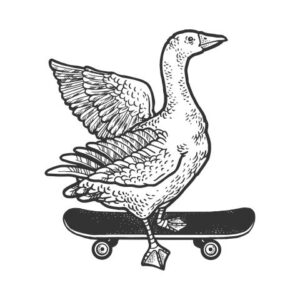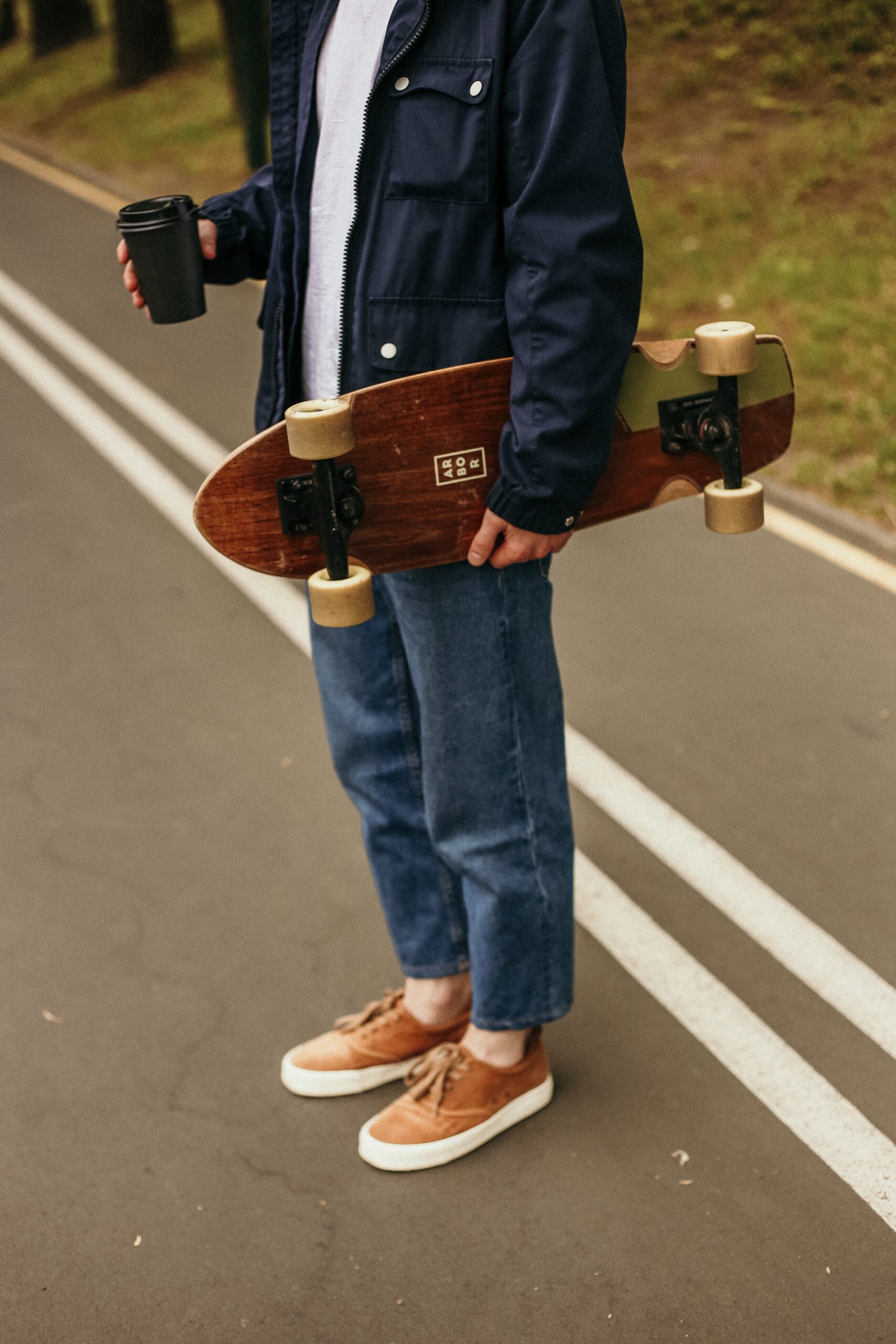Longboarding is a bit strange to me. I never really intended to try it, but ended up getting a chance to when I non-skating friend offered to ride together.
I ended up loving the stability and smooth ride though. My friend and I started picking different parts of the city and cruising on longboards to explore it. This was tons of fun and gave longboarding a lot of nice memories and a special place in my heart.
Longboarding can be learned on your own through the use of youtube tutorials and other sources. If you are learning or skating alone, you need to be aware of safety. First, learn how to properly stop on your longboard and wear proper gear. An accident that occurs while you are skating alone could turn fatal. Try and bring a friend.
Honestly, YouTube makes learning anything fairly easy and straightforward. I had an easier time transitioning to longboard because I had skateboarded before. Yet, I still needed to learn how to drag my foot to stop the longboard. YouTube and my riding buddy helped me with that.
Can You Teach Yourself to Longboard?
You can teach yourself to longboard, but you need to be careful about safety. First, you need to start with the proper safety gear. For longboarding, the only critical pieces of equipment are the helmet and wrist guards. You can use elbow and knee pads too if you are a beginner. However, once you learn how to fall and stop properly, kneepads and elbow pads won’t be necessary for the average longboarder.
Finding resources and video tutorials to help you learn to longboard will be easy. The internet is chock full of them, but there really aren’t a ton of good videos. Here is the best absolute beginner tutorial that I could find on YouTube.
This video and host is a good and clear teacher, but the quality of longboard tutorial videos falls off pretty quick. Maybe Board and Wheels will make our own longboard tutorial 😉
The Biggest Problem With Teaching Yourself to Longboard
There isn’t much stopping you from progressing on your own with longboarding. The real key here is making sure safety is addressed. A nasty fall with no one else around could potentially turn fatal. So be sure to skate in places with bystanders around if you are longboarding alone.
Beyond safety, the biggest problem with teaching yourself to longboard is that you will miss out on the fun of sharing the experience with someone else. Happiness is better shared. of course, you should still longboard alone if you don’t have a friend to longboard with, your experience longboarding will be better with a friend.
Also, a friend can help us have a third perspective that can help you identify problems and progress faster. So just know that this isn’t such a big problem! And you can always meet longboarders after you learn the basics 🙂
If you want to know about how longboarding can be great exercise check our guide and calorie calculator here.
What Longboard Tricks Should I Learn First?
These aren’t quite “tricks” in the traditional sense, but are essential to riding your longboard. These are the first things you need to learn with riding your longboard.
1. How to Stand on Your Longboard
Standing on your longboard can be a matter of choice, but there is a popular choice. I recommend the popular choice where your front foot (your non-dominant foot) is placed so your toes are above the front axle. Your back, the dominant foot will push off and come onto the board above the back axle or slightly more forward.
Your front foot will be positioned to face forward or at a 45-degree angle while you push but will transition to being perpendicular to the board direction once both feet are on the board.
2. How to Push Off
This is how you start moving with your longboard. You want to move don’t you?
With your front non-dominant foot placed above the front axle, you will use your dominant foot to push off of the concrete. This will propel you forward.
This can be tricky because if you lean too far to the right or left then you will begin to turn. Your foot needs to be centered on the board.
Copy this technique ad naseum. Push off and push off until it is second nature to you.
3. How to Stop
The easiest way to stop on a longboard is by dragging your dominant foot flat on the ground. This is actually quite tricky and hard to learn compared to stopping on a skateboard.
You need to have just enough contact to slow down, but not catch your foot and stop abruptly and suddenly. This results in a balancing act as you hang your foot just right off the board so it drags the pavement. You can’t just slam your foot down to stop because at high speeds stopping abruptly can cause injuries.
4. How to Turn
After you can stand on your board, push off, and stop then it’s time to learn to turn. This is relatively easy to learn, but hard to control. You likely have already been turning your board as your balance might not be very good as a beginner.
Turning all comes down to shifting your body weight in the direction you want to turn, and then recentering yourself after the turn. This is the next crucial step in learning to longboard. If you can’t turn, then you can’t longboard. Unfortunately, roads aren’t often in a straight line.
Shifting your weight can be hard to do for some. You will need to shift your center of gravity just enough to execute the turn and then reposition yourself back to the center of the board.
After learning how to stand, push, stop, and turn then you’re ready to go out and cruise your city and anywhere else. Enjoy!~ Now the real fun starts.
Is Longboarding Hard?
Longboarding requires a lot of balance, body control, and confidence. It is a safe sport to practice, but you can easily get injured early on. However, this shouldn’t discourage you from trying to longboard or from trying to teach yourself to longboard.
The basics of longboarding are quick to learn though it may take some time to get comfortable on a longboard. If your goal is to just cruise around, then you can learn to longboard quickly without too much trouble. Carving downhill and tricks take much more skill and patience to learn. As with everything, practice will make things easier.
Just because longboarding takes time to learn and can feel hard, doesn’t mean you shouldn’t give it a go! Cruising on a board can give such a freeing feeling that it’s worth dealing with the learning curve.
If you need a mental break and want to see some cute dogs skateboarding then check out our list of skateboarding dogs here.
Conclusion
Longboarding is an increasingly popular sport with boards ranging from full-length longboards, cruisers, and penny boards. You can and should teach yourself to longboard if you want to and there are great resources online.
The biggest concern with teaching yourself to longboard is safety. This cannot be stated enough that longboarding alone for the first time can be dangerous. This is your first time on a board with wheels under it. You will fall and you will make mistakes. Definitely skate in an area with bystanders just in case you need someone’s help.
To get started with longboarding, first learn how to position your feet and stand on your board. Then learn to push off to get rolling. After this, you will learn to drag your foot to stop your board safely. With these three “tricks” you will be ready to cruise your city on your longboard.
Also, longboarding is hard so don’t get frustrated with yourself if you struggle at first. That’s completely natural and you will get better with time and practice 🙂
Anyway, that’s all. Look out for more articles from Board and Wheels soon.



